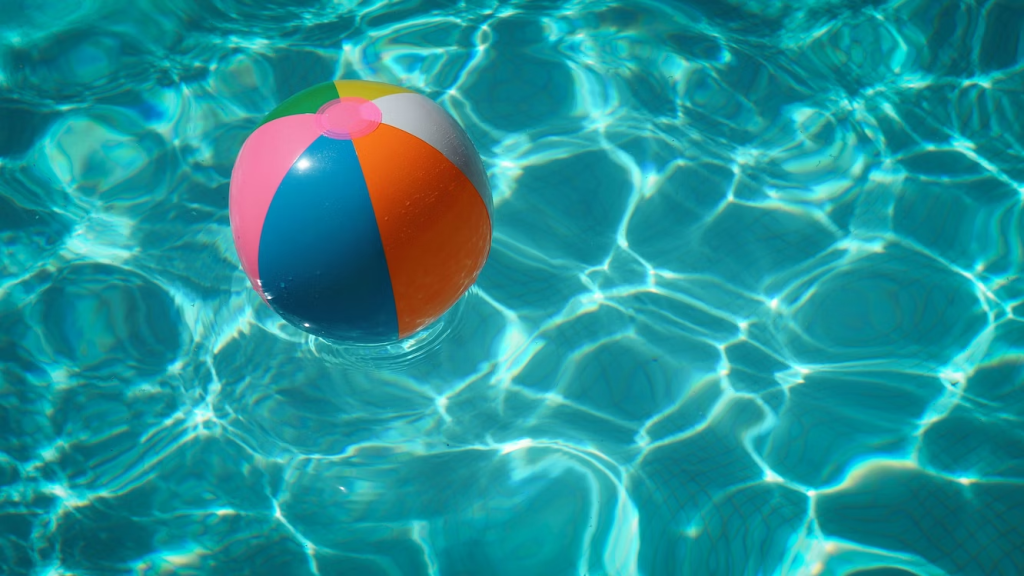A sparkling, crystal-clear pool is an inviting oasis that provides a refreshing escape from the scorching heat of summer. However, maintaining a clean and pristine pool requires regular care and attention. From balancing the chemicals to cleaning the filters, there are several essential tasks that pool owners must perform to ensure optimal water quality. In this ultimate guide to pool cleaning, we will explore five key areas of maintenance and provide you with expert tips and tricks to achieve a crystal-clear oasis in your backyard.
1. Testing and Balancing Pool Chemicals
One of the fundamental aspects of pool maintenance is testing and balancing the pool chemicals. Properly balanced chemicals not only sanitize the water but also prevent the growth of algae and harmful bacteria. To start, invest in a reliable pool water testing kit that measures pH, chlorine, alkalinity, and calcium hardness levels. Regularly test the water and adjust the chemical levels accordingly.
Maintaining the ideal pH level of 7.4 to 7.6 is crucial for comfortable swimming and preventing the corrosion of pool equipment. If the pH is too low, add a pH increaser, such as soda ash, to raise the level. Conversely, if the pH is too high, a pH reducer, like muriatic acid, can be used.
Chlorine is essential for killing bacteria and keeping the water sanitized. Aim for a chlorine level between 1 and 3 parts per million (ppm). If the chlorine level is low, add a chlorinating product. Alternatively, if the chlorine level is high, a chlorine reducer or shock treatment can be used.
Regularly check and adjust the alkalinity and calcium hardness levels as well, as they impact the overall water balance. By maintaining proper chemical levels, you ensure a safe and enjoyable swimming experience.
2. Skimming and Vacuuming
Skimming the pool’s surface and vacuuming the bottom are vital tasks to keep your pool clean and free of debris. Leaves, bugs, and other debris tend to accumulate on the water surface, making it look unsightly and clogging the filters. Use a skimmer net or skimmer basket to remove these floating objects.
For debris that sinks to the bottom, using a pool vacuum is necessary. There are manual and automatic vacuum options available. If you opt for a manual vacuum, attach it to a telescopic pole and slowly move it across the pool floor, overlapping each pass to ensure thorough cleaning. Automatic vacuums can be left to operate on their own, saving you time and effort.
Regular skimming and vacuuming not only maintain the pool’s aesthetic appeal but also prevent the debris from decaying and affecting the water chemistry.
3. The Efficient Ally: Pool Cleaners
When it comes to maintaining a sparkling pool, having a reliable pool cleaner can be your best ally. Pool cleaners are automated devices designed to navigate the pool’s surface and walls, efficiently removing dirt, debris, and even algae. They come in various types, including suction-side, pressure-side, and robotic cleaners.
Suction-side cleaners attach to the pool’s suction line and use the filtration system to create suction and move around the pool, collecting debris in a bag or filter. Pressure-side cleaners utilize the pool’s return jets to propel themselves and sweep debris into a dedicated bag or filter. A Robotic pool cleaner is a self-contained unit that operates independently, powered by electricity. They have their own filtration system and are known for their advanced cleaning capabilities.
Pool cleaners save you valuable time and effort by automating the cleaning process. They reach areas that may be challenging to access manually, ensuring thorough cleaning of the pool. With their efficient operation, they help maintain water clarity and reduce the strain on other pool maintenance tasks.
Investing in a pool cleaner can significantly enhance your pool cleaning routine, leaving you with more time to relax and enjoy your crystal-clear oasis.
4. Cleaning and Backwashing the Filter
The pool filter plays a crucial role in removing dirt, debris, and other impurities from the water. Over time, these impurities build up, clogging the filter and reducing its efficiency. Therefore, cleaning and backwashing the filter regularly is essential.
The frequency of cleaning depends on the type of filter you have. Sand filters require backwashing, which involves reversing the water flow to flush out the trapped debris. Cartridge filters can be removed and cleaned with a hose or replaced if necessary. D.E. (diatomaceous earth) filters require periodic backwashing and recharging with D.E. powder.
Follow the manufacturer’s instructions for your specific filter type to ensure proper maintenance. Regularly cleaning the filter will help maintain water clarity and circulation, prolonging the life of your filtration system.
5. Brushing the Pool Walls and Tiles
Even with regular skimming and vacuuming, some dirt and algae can cling to the pool walls and tiles. Brushing these surfaces is crucial to prevent the buildup of grime and maintain a clean pool.
Invest in a pool brush with nylon or stainless steel bristles, depending on your pool’s surface. For concrete or plaster pools, stainless steel bristles are more effective, while nylon bristles are suitable for vinyl or fiberglass surfaces.
Start from the top and work your way down, using long, sweeping motions to dislodge any dirt or algae. Pay extra attention to corners, steps, and other hard-to-reach areas. Brushing the pool walls and tiles at least once a week will prevent the accumulation of stubborn stains and keep your pool looking immaculate.
6. Maintaining Water Circulation and Equipment
Proper water circulation is essential for maintaining a clean and healthy pool. It helps distribute chemicals evenly, prevents stagnant areas where algae can grow, and ensures efficient filtration. To achieve optimal circulation, keep the pool’s pump and skimmer baskets clean and free of debris.
Inspect and maintain your pool’s equipment regularly. Check for leaks, cracks, or any signs of damage. Lubricate o-rings and gaskets to prevent leaks and maintain proper sealing. Clean out the pump strainer basket to ensure it is clear of debris, which can hinder water flow.
Additionally, ensure that the pool’s water level remains at the optimal level, usually halfway up the skimmer opening. If it falls too low, the pump may run dry, leading to potential damage.
By regularly inspecting and maintaining your pool’s circulation system and equipment, you can prolong its lifespan and ensure efficient operation, resulting in a cleaner pool overall.

Maintaining a crystal-clear oasis in your backyard pool requires dedication and consistent effort. By following the tips and tricks outlined in this ultimate guide, you can achieve optimal water quality and enjoy a refreshing swim all summer long. From testing and balancing pool chemicals to skimming and vacuuming, cleaning and backwashing the filter, brushing the pool walls and tiles, and maintaining water circulation and equipment, each aspect of pool maintenance plays a vital role in creating a pristine swimming environment.
Remember to regularly test and balance the pool chemicals, ensuring proper pH and chlorine levels for a safe and enjoyable swimming experience. Skimming and vacuuming the pool diligently will prevent debris from accumulating and affecting water clarity. Cleaning and backwashing the filter will maintain its efficiency and ensure optimal filtration. Brushing the pool walls and tiles will prevent the buildup of grime and keep the pool looking immaculate. Lastly, maintaining water circulation and equipment will contribute to the overall cleanliness and longevity of your pool.
By incorporating these tips into your pool cleaning routine, you’ll be rewarded with a sparkling, crystal-clear oasis that invites you to relax and enjoy the summer months. So dive in, take care of your pool, and create the perfect sanctuary for endless hours of fun and relaxation.













